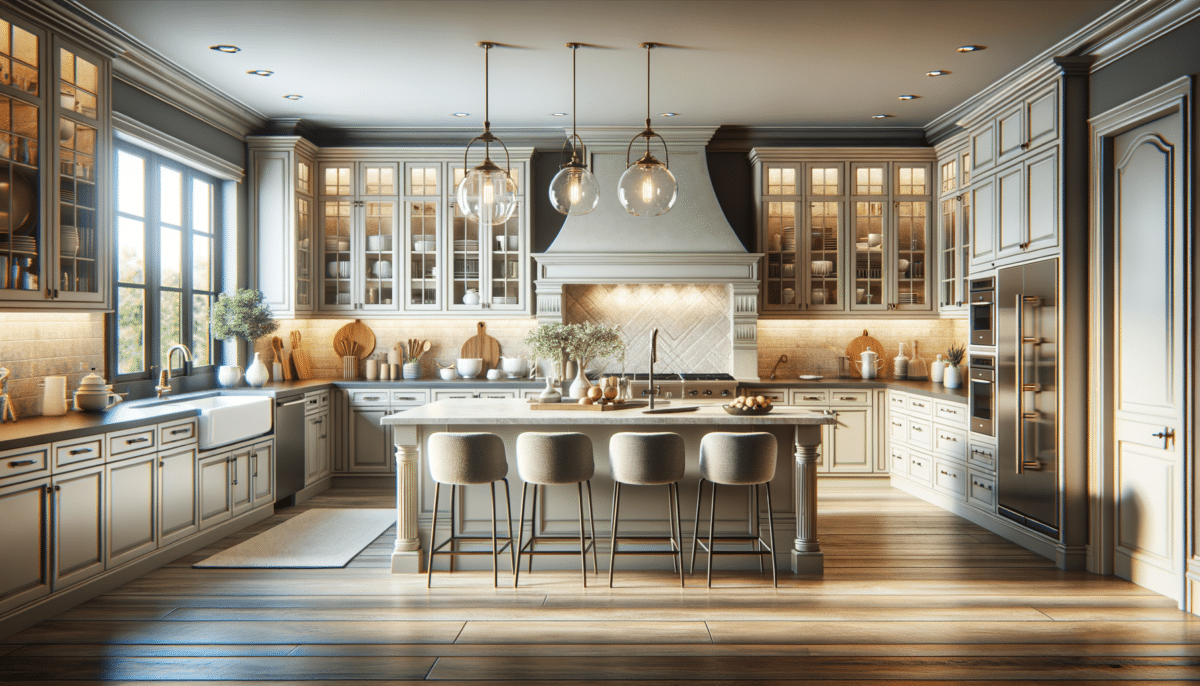Open Concept Kitchens: A Breath of Fresh Air
In recent years, open concept kitchens have become a popular choice for homeowners looking to create a more inviting and spacious environment. By eliminating walls and barriers, this design fosters a seamless flow between the kitchen, dining, and living areas. This approach not only enhances the aesthetic appeal of your home but also promotes better interaction among family members and guests.
One of the key benefits of an open concept kitchen is the increased natural light. Without walls to obstruct the flow of light, your kitchen becomes brighter and more welcoming. Additionally, this design can make smaller spaces feel larger, adding a sense of airiness and openness that is highly sought after in modern homes.
When considering an open concept remodel, it’s important to think about the layout and functionality. Consider incorporating a large kitchen island that serves as a central hub for cooking, dining, and socializing. This feature not only adds counter space but also provides additional storage and seating options. Choose materials and finishes that complement the overall design of your home, ensuring a cohesive look throughout the space.
While open concept kitchens offer numerous advantages, they may not be suitable for everyone. If you prefer a more traditional layout with distinct boundaries between rooms, this style may not align with your preferences. However, for those who value connectivity and a modern aesthetic, an open concept kitchen can be a transformative choice.
Smart Kitchens: Integrating Technology for Convenience
The rise of smart technology has revolutionized the way we interact with our homes, and the kitchen is no exception. Smart kitchens incorporate technology to enhance convenience, efficiency, and safety. From smart appliances to automated lighting and climate control, these kitchens are designed to make daily tasks easier and more enjoyable.
One of the standout features of a smart kitchen is the integration of intelligent appliances. Consider investing in a refrigerator that allows you to view its contents remotely via a smartphone app. This can be particularly useful when grocery shopping, as you can easily check what items you need to replenish. Similarly, smart ovens can be preheated remotely, ensuring your meal is ready when you arrive home.
In addition to appliances, consider incorporating smart lighting solutions. Automated lighting systems can be programmed to adjust based on the time of day or your personal preferences, creating the perfect ambiance for cooking and dining. Furthermore, voice-activated assistants can help you manage tasks hands-free, from setting timers to playing your favorite cooking playlist.
While the initial investment in smart kitchen technology may be higher, the long-term benefits in terms of convenience and energy efficiency can outweigh the costs. As technology continues to evolve, smart kitchens are becoming increasingly accessible and customizable, allowing homeowners to create a space that meets their unique needs and lifestyle.
Sustainable Kitchens: Designing with the Environment in Mind
As environmental awareness grows, more homeowners are seeking sustainable kitchen remodel options that reduce their carbon footprint and promote eco-friendly living. Sustainable kitchens focus on using materials and practices that are environmentally responsible and resource-efficient throughout the kitchen’s lifecycle.
One of the first steps in creating a sustainable kitchen is choosing eco-friendly materials. Opt for cabinetry made from certified sustainable wood or recycled materials. Countertops crafted from recycled glass or composite materials are not only stylish but also durable and environmentally friendly. Additionally, consider energy-efficient appliances that consume less power and water, reducing your overall environmental impact.
Beyond materials, sustainable kitchens also emphasize waste reduction and recycling. Install a dedicated recycling station to make sorting and disposing of recyclables easier. Composting is another excellent way to reduce waste and enrich your garden soil with nutrient-rich compost.
Water conservation is another critical aspect of sustainable kitchen design. Low-flow faucets and fixtures can significantly reduce water usage without sacrificing performance. Additionally, consider incorporating a greywater system to recycle water from sinks for use in irrigation or other non-potable applications.
By prioritizing sustainability in your kitchen remodel, you not only contribute to a healthier planet but also create a space that is healthier for you and your family. Sustainable kitchens often result in lower utility bills and increased home value, making them a wise investment for environmentally conscious homeowners.
